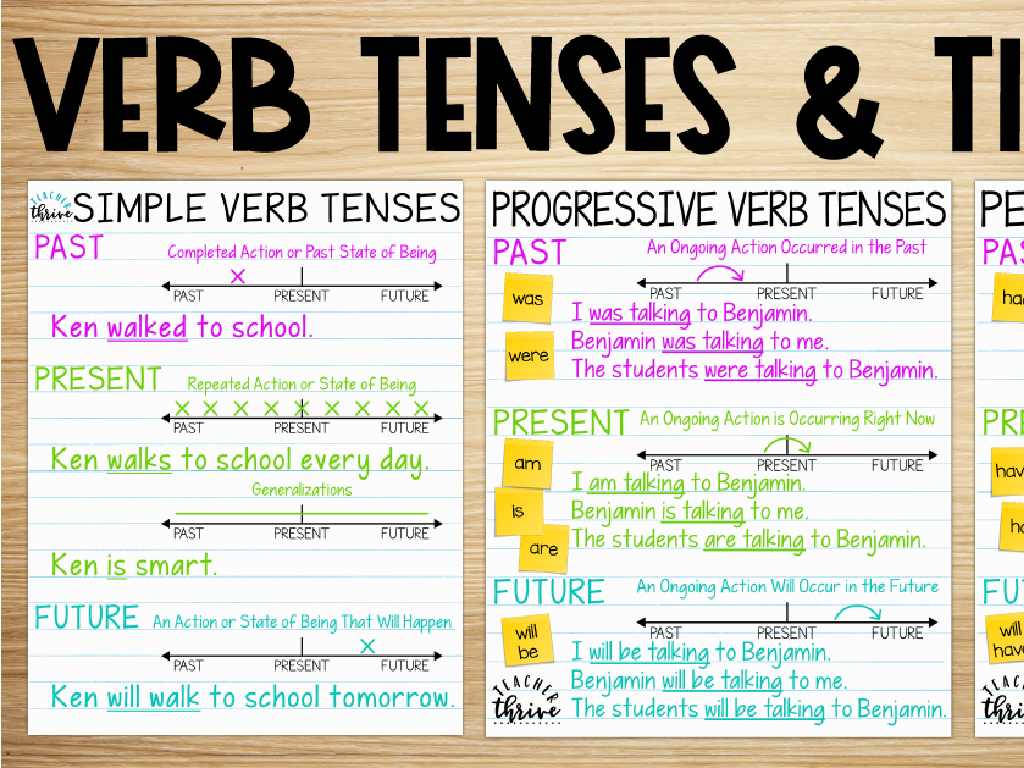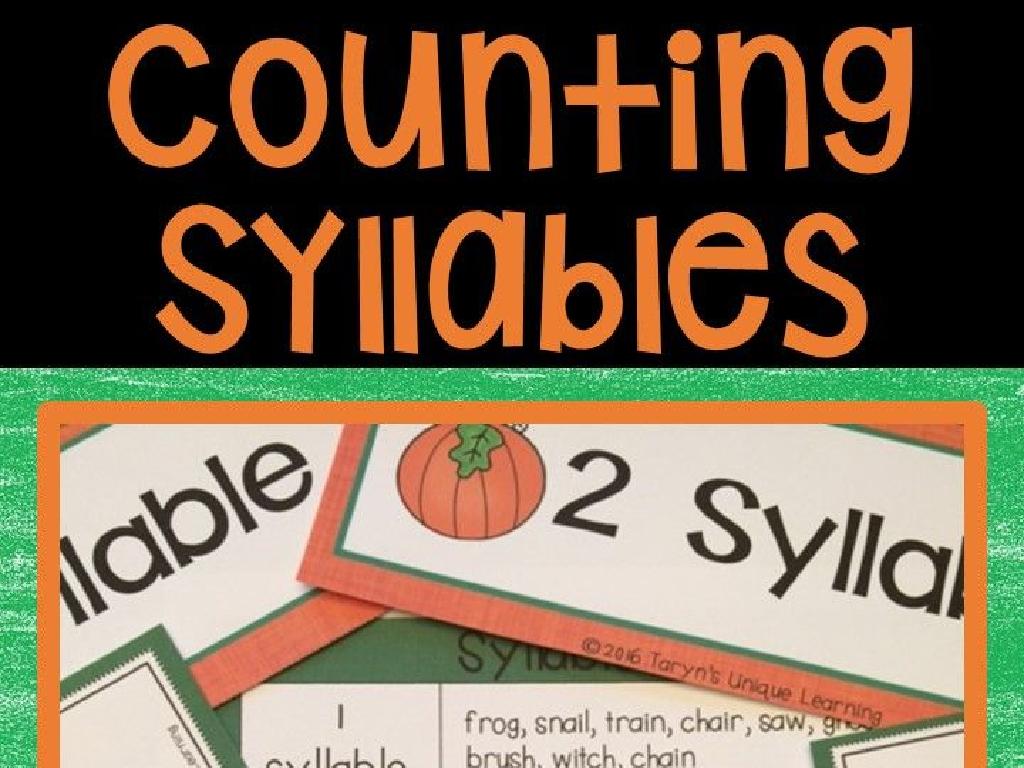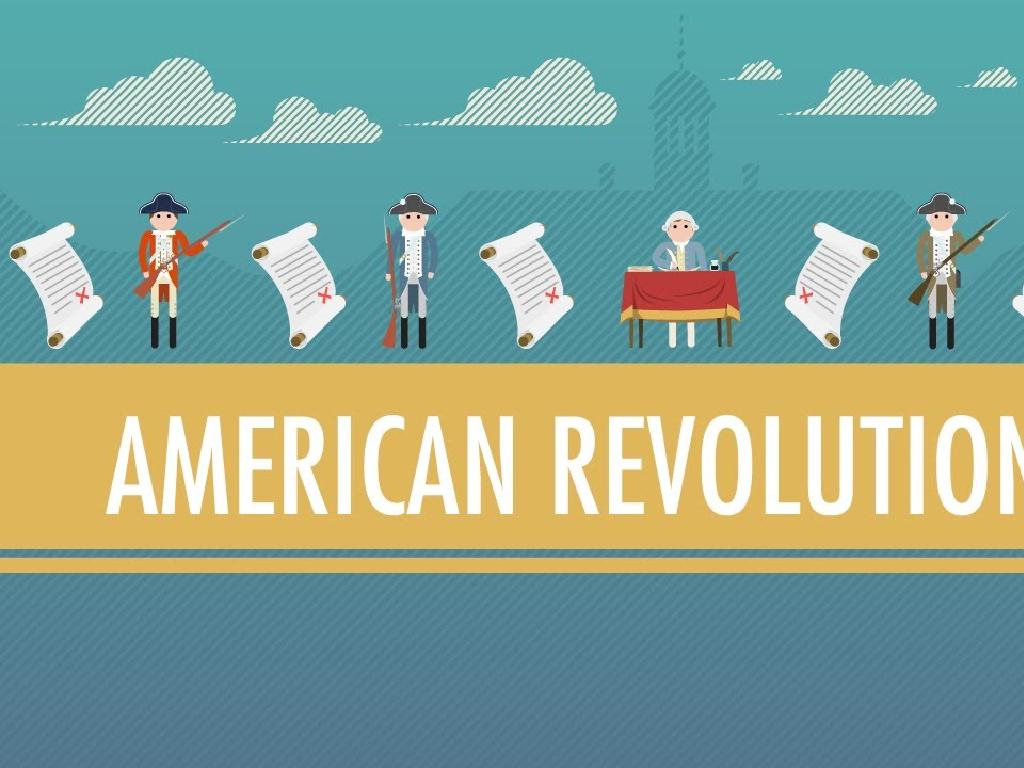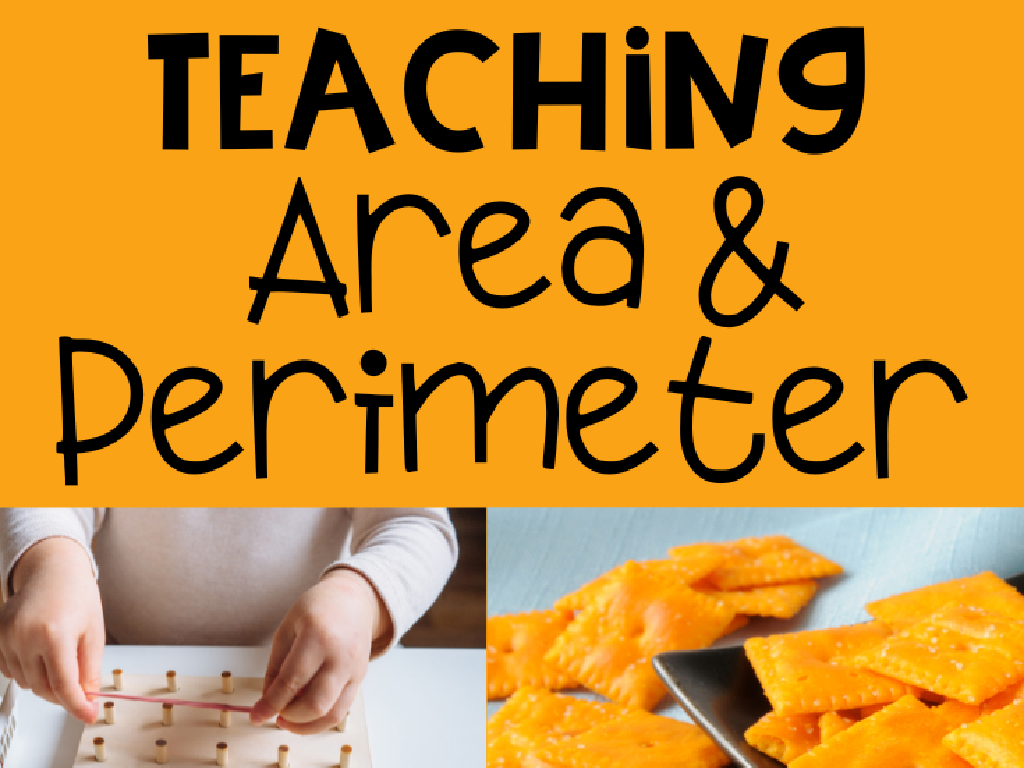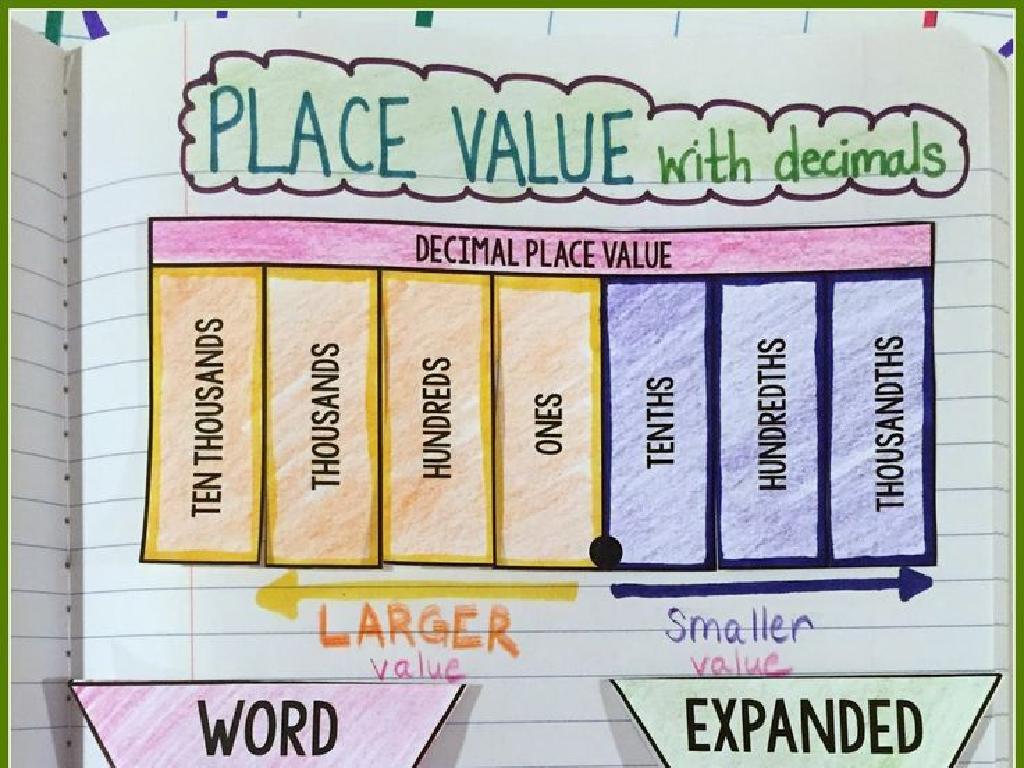Use Relative Pronouns: Who, Whom, Whose, Which, And That
Subject: Language arts
Grade: Sixth grade
Topic: Pronoun Types
Please LOG IN to download the presentation. Access is available to registered users only.
View More Content
Understanding Relative Pronouns
– What are relative pronouns?
– Words that connect clauses to nouns or pronouns
– ‘Who’ and ‘whom’ usage
– ‘Who’ for subjects, ‘whom’ for objects (e.g., ‘Who called?’ vs. ‘Whom did you call?’)
– ‘Whose’, ‘which’, and ‘that’ explained
– ‘Whose’ shows possession, ‘which’ for things, ‘that’ for people/things
– Practice identifying relative pronouns
|
This slide introduces the concept of relative pronouns to the students, which are crucial for connecting clauses and providing additional information about the subject. Start by explaining the role of relative pronouns in sentences. Then, differentiate between ‘who’ (used for subjects) and ‘whom’ (used for objects). Clarify the use of ‘whose’ for possession, ‘which’ for referring to things, and ‘that’ for both people and things. Provide examples for each to solidify understanding. Conclude with an activity where students identify relative pronouns in sentences from a text or worksheet. This will help them recognize and use these pronouns in their writing.
Exploring Pronouns: Types and Uses
– Pronouns: A Quick Review
– Pronouns are words that take the place of nouns.
– Pronouns Prevent Repetition
– They help make sentences less repetitive and more concise.
– Common Pronouns: he, she, it, they
– Examples include ‘he’ for a boy, ‘she’ for a girl, ‘it’ for an object, and ‘they’ for a group.
– Relative Pronouns: who, whom, whose, which, that
– These pronouns relate to the noun and give more information about it.
|
Begin with a review of pronouns and their function in sentences, which is to replace nouns and avoid redundancy. Provide examples of common pronouns and their usage. Then, introduce relative pronouns, explaining that they not only replace nouns but also connect clauses to provide additional information about the noun. Use examples to illustrate how relative pronouns work within a sentence. Encourage students to come up with their own sentences using relative pronouns to solidify their understanding.
Exploring Relative Pronouns
– What are relative pronouns?
– Linking clauses to nouns/pronouns
– They connect details to nouns, like ‘the backpack that I lost’.
– Introduction to relative clauses
– A part of a sentence that gives more information about a noun.
– Sentence examples
– ‘The teacher, who loves books, is reading.’
|
This slide introduces the concept of relative pronouns to the students, which are words like who, whom, whose, which, and that. These pronouns are used to link clauses to nouns or pronouns, essentially providing more information about the noun. Relative clauses are dependent clauses that describe nouns, and they cannot stand alone. Use examples to illustrate how relative pronouns function within sentences. For instance, in the sentence ‘The cyclist who won the race trained hard,’ ‘who’ links the relative clause ‘won the race’ to ‘the cyclist,’ providing more details about the subject. Encourage students to create their own sentences using relative pronouns to enhance their understanding.
Mastering Relative Pronouns: ‘Who’ vs ‘Whom’
– ‘Who’ is used for subjects
– Example: The artist who painted this is famous.
– ‘Whom’ is used for objects
– Example: The artist whom the gallery featured is famous.
– ‘Whom’ follows prepositions
– Prepositions like to, for, or with often come before ‘whom’.
– Practice with examples
|
This slide focuses on the correct usage of ‘who’ and ‘whom’ in sentences. ‘Who’ is used when referring to the subject of a sentence, the person performing an action. For example, ‘The artist who painted this is famous.’ Here, ‘who’ refers to the artist as the subject. On the other hand, ‘whom’ is used when referring to the object of a sentence, the person receiving an action. For example, ‘The artist whom the gallery featured is famous.’ Notice that ‘whom’ is often used after prepositions such as ‘to,’ ‘for,’ or ‘with.’ Encourage students to create their own sentences using ‘who’ and ‘whom’ correctly. Provide additional examples and practice sentences to reinforce the concept.
Understanding ‘Whose’ in Relative Pronouns
– ‘Whose’ indicates possession
– Example: ‘The artist whose paintings we admire is famous.’
– Refers to people and things
– ‘Whose’ can relate to ‘the dog whose bone was stolen’ or ‘the artist whose painting we saw’.
– Activity: Spot ‘whose’ in a book
– Find sentences using ‘whose’ and explain the possession in your favorite book.
|
This slide focuses on the relative pronoun ‘whose’ and its usage to show possession. It’s important to clarify that ‘whose’ can refer to both people and objects, which can sometimes confuse students. Provide clear examples to illustrate its use. For the activity, instruct students to look for ‘whose’ in books they enjoy and bring examples to class. They should identify the possessor and the item possessed. This exercise will help them understand the practical application of ‘whose’ and enhance their ability to recognize and use relative pronouns correctly. Offer guidance on how to distinguish ‘whose’ from ‘who’s’ (contraction for ‘who is’ or ‘who has’) to avoid common mistakes.
Using ‘Which’ and ‘That’ in Sentences
– ‘Which’ for extra details
– Example: ‘The car, which is red, is fast.’
– ‘That’ for crucial info
– Example: ‘The car that is fast won the race.’
– Commas with ‘which’
– Non-essential info is separated by commas.
– Practice distinguishing uses
|
This slide focuses on the correct usage of ‘which’ and ‘that’ in sentences. ‘Which’ is used to introduce clauses that provide additional, non-essential information about a noun, and these clauses are typically set off by commas. In contrast, ‘that’ is used for clauses that are essential to the meaning of the sentence, and such clauses do not require commas. To reinforce this lesson, students should practice by creating sentences using both ‘which’ and ‘that’ to understand the difference in context. Additionally, they can practice identifying whether information is essential or non-essential and thus determine the correct relative pronoun to use.
Let’s Practice Relative Pronouns!
– Combine sentences with relative pronouns
– Use ‘who’ for people, ‘which’ for things, ‘that’ for both
– Spot and fix relative pronoun errors
– Find sentences with pronoun mistakes and correct them
– Craft sentences using each pronoun
– Create your own examples with ‘who’, ‘whom’, ‘whose’, ‘which’, ‘that’
– Understand the role of relative pronouns
|
This slide is designed for a class activity to reinforce the use of relative pronouns. Start by explaining the function of relative pronouns in combining sentences to provide additional information about a noun. Encourage students to identify incorrect uses of ‘who’, ‘whom’, ‘whose’, ‘which’, and ‘that’ in given sentences and correct them. Then, have students create their own sentences using each relative pronoun correctly. This will help them understand how relative pronouns relate to the nouns they modify and how they can be used to combine ideas into complex sentences. For the teacher: Prepare examples of sentences that can be combined or corrected, and have a list of sentences ready for students to create their own. Encourage peer review to foster collaborative learning.
Class Activity: Relative Pronoun Hunt
– Find relative pronouns in a paragraph
– Pair up to write a story with pronouns
– Use ‘who, whom, whose, which, that’ in your story
– Share stories with the class
– Discuss the use of each pronoun
– Explain why you chose each pronoun
|
This activity is designed to reinforce the students’ understanding of relative pronouns through practical application. Begin by providing a paragraph to each pair of students and ask them to highlight the words ‘who, whom, whose, which, and that.’ Once they’ve identified these pronouns in context, students should collaborate to create a short story that includes all the relative pronouns they’ve learned. After writing, each pair will share their story with the class, offering a chance for public speaking and peer learning. Encourage them to discuss why they chose each relative pronoun, focusing on the function and necessity of the pronouns in their sentences. This will help them grasp the concept of relative pronouns as words that link clauses to nouns or pronouns. For the teacher: Prepare a paragraph rich in relative pronouns for the identification activity, and have a list of story prompts ready in case some pairs need inspiration. After the activity, consider providing feedback on their use of relative pronouns to solidify their understanding.
Wrapping Up: Relative Pronouns & Homework
– Recap on relative pronouns
– Homework: Write a short essay
– Use who, whom, whose, which, that
– Include 5 relative pronouns
– Show how they connect sentences
– Get ready for a pronoun quiz
|
As we conclude today’s lesson, remind students of the key points about relative pronouns. For homework, they should write a short essay where they practice using ‘who,’ ‘whom,’ ‘whose,’ ‘which,’ and ‘that.’ This will help reinforce their understanding by applying the pronouns in their writing. Encourage creativity and the use of diverse sentences. Also, inform them about the upcoming quiz on pronouns to motivate them to review the lesson. Provide some study tips and remind them of the resources available to study, such as their notes, textbooks, and online materials.

